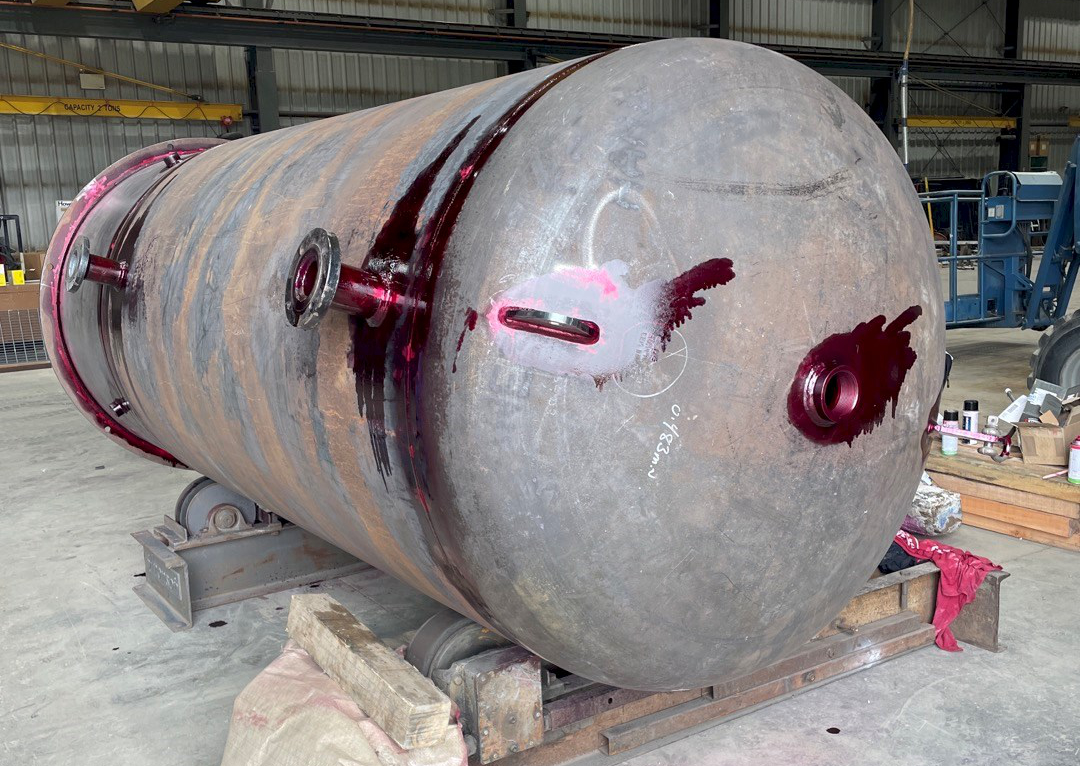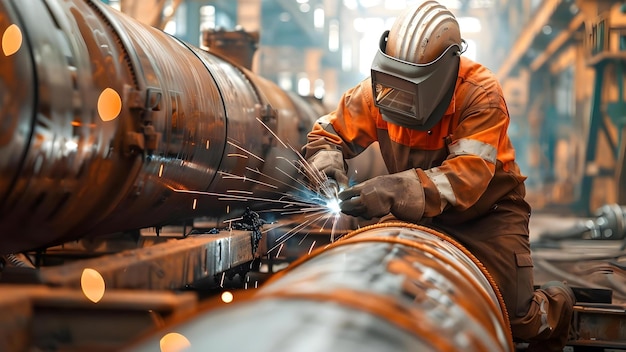
Recognizing the Value of Rigorous Tank Welding Inspection Processes in Stopping Failures and Enhancing Lifespan
In the world of commercial procedures, the value of rigorous tank welding examination processes can not be overstated. By applying numerous examination methods, organizations can discover imperfections early, therefore avoiding costly effects and prolonging the life of their storage space containers.
Relevance of Welding Assessments
Acknowledging the important function of welding assessments in preserving architectural honesty, these procedures make sure that welds meet well established standards and specs - Tank Welding Inspection. Reliable welding inspections are paramount in the building and maintenance of storage tanks, as they straight impact the resilience and security of the structures. By determining potential shortages, such as incorrect methods or product defects, evaluations reduce the risk of catastrophic failings
Welding examinations incorporate various approaches, including aesthetic exams, non-destructive screening (NDT), and evaluations of welding procedures. Each method serves to confirm the quality and conformity of welds with market regulations, therefore protecting both personnel and environmental rate of interests. Furthermore, routine evaluations foster a culture of liability and excellence within the workforce, ensuring that all employee comply with best techniques.
Furthermore, these examinations add to the general lifecycle monitoring of containers by determining wear or degradation early in the procedure. By dealing with these issues proactively, organizations can expand the functional life-span of their properties, ultimately resulting in cost financial savings and enhanced reliability. In recap, the value of welding evaluations can not be overemphasized; they are important for making sure security, durability, and compliance in container construction and maintenance.
Usual Causes of Tank Failures
Understanding the common sources of container failures is vital for preventing devastating occurrences and ensuring the durability of storage systems. One common root cause of tank failing is deterioration, which can significantly weaken the structural stability of tanks over time. Environmental aspects, such as exposure to wetness, chemicals, and temperature fluctuations, can increase this procedure.
An additional vital variable is inappropriate welding methods, which may cause problems like splits or insufficient joints. These concerns can jeopardize the tank's toughness and cause leaks or tears. Additionally, poor maintenance techniques can cause unnoticed damage, inevitably enhancing the risk of failing.
Layout defects, consisting of inadequate thickness or bad product option, can additionally contribute to container vulnerabilities. In addition, functional aspects, such as overfilling or direct exposure to extreme pressures, can stress the tank beyond its designated limits.
Secret Inspection Techniques
Reliable evaluation strategies play an important duty in minimizing the risks associated with container failures. A thorough strategy to tank welding inspection involves a number of vital techniques, each designed to identify potential flaws and guarantee architectural honesty.
Aesthetic assessment continues to be the very first line of great post to read defense, permitting inspectors to identify surface abnormalities such as fractures, corrosion, or misalignment. This method is usually supplemented by non-destructive testing (NDT) methods, which are crucial for evaluating weld top quality without endangering the tank's honesty.

Moreover, magnetic bit screening (MPT) and dye penetrant testing (DPT) are effective for discovering surface defects in ferromagnetic materials and non-porous surface areas, specifically. Each strategy has its strengths and limitations; therefore, a mix of approaches is commonly employed to accomplish thorough examination outcomes.
Advantages of Strenuous Inspections
While the immediate costs of strenuous examinations might seem complicated, the long-term advantages significantly outweigh these first investments. Carrying out detailed assessment processes not only improves the stability and safety of tank structures however likewise lessens the threat of disastrous failures that can lead to substantial economic losses and environmental injury.
Strenuous assessments assist identify potential problems early in the welding process, permitting prompt corrective activities that protect against pricey repairs or substitutes down the line. This proactive method promotes a society of quality assurance, where adherence to best practices comes to be instilled in operational procedures. Furthermore, normal inspections add to increased asset longevity, as they make sure that containers remain in ideal condition throughout their life expectancy.
Additionally, the documents generated from these assessments functions as a valuable resource for upkeep preparation and efficiency analyses. This data-driven strategy can additionally enhance operational efficiency, leading to lowered downtime and improved productivity. Ultimately, strenuous evaluations not just secure the architectural integrity of tanks but also offer considerable financial advantages, strengthening the concept that investing in quality control is a smart choice for any kind of company entailed in container operations.
Governing Requirements and Conformity
Regulatory standards and conformity are crucial components of container welding examination procedures, as they establish the structure for making certain safety and security and quality in operations. Conformity with these requirements not just alleviates threats yet likewise boosts the general stability of bonded structures. Various companies, including the American Culture of Mechanical Engineers (ASME) and the American Oil Institute (API), provide standards that dictate appropriate methods for welding, evaluation, and screening.
These standards mandate the usage of qualified workers, the implementation of strenuous evaluation protocols, and adherence to particular welding procedures. By aligning with regulative requirements, organizations can make sure that their containers meet the necessary security and go to these guys efficiency standards, consequently lowering the possibility of disastrous failures that can result in significant financial losses and ecological damages.

Moreover, governing conformity promotes a culture of liability and continual improvement within the welding and construction markets (Tank Welding Inspection). Normal audits and inspections make certain that methods continue to be aligned with progressing standards, thereby promoting long-term reliability and functional effectiveness. Inevitably, adherence to governing standards not only safeguards assets but also improves the lifespan of welded tanks, ensuring they serve their desired function properly gradually
Verdict
In final thought, strenuous storage additional resources tank welding inspection processes play an important function in stopping failures and prolonging the lifespan of storage frameworks. By determining prospective shortages with different examination methods, companies can alleviate risks connected with tank integrity.